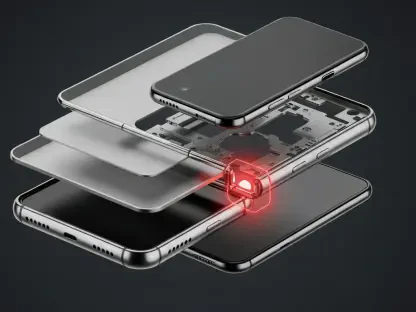Electric underfloor heating is rapidly emerging as a cutting-edge solution for home heating, signifying a significant shift toward more energy-efficient, sustainable, and technologically compatible systems. This trend is predominantly driven by the burgeoning need for heating solutions that not only deliver reliable performance but also cater to modern aesthetic preferences and energy conservation standards. As traditional heating methods like wood-burning hearths and bulky radiators gradually fall out of favor, electric underfloor heating is making a compelling case with its myriad advantages to both homeowners and commercial entities.
The essence of electric underfloor heating lies in its inherent design and operational mechanisms. Essentially, electric underfloor heating uses a network of heating cables or mats installed beneath the floor surface. When activated, these networks radiate heat evenly throughout the room. This process starkly contrasts with conventional heating methods that circulate air and often result in uneven temperatures and drafts. Electric underfloor heating ensures a uniform temperature distribution, creating consistently warm and cozy environments, which is particularly beneficial during the colder months. Additionally, this even heat distribution enhances overall comfort and significantly reduces energy waste, making it an attractive option for those living in colder climates.
The Basics of Electric Underfloor Heating
Electric underfloor heating systems fundamentally differ from traditional heating methods by providing a more efficient and streamlined heating approach. At the heart of these systems are heating cables or mats placed just beneath the flooring, which radiate heat evenly through the room when activated. This method eradicates the uneven temperature zones commonly found in rooms heated by radiators or other forced-air systems. The technology behind electric underfloor heating ensures that the entire floor area emits warmth, leading to a consistently comfortable environment throughout the space, invaluable in regions experiencing harsh winters.
Two primary types of electric underfloor heating systems dominate the market: loose wire systems and heating mats. Loose wire systems are typically employed in irregularly shaped rooms due to their flexible installation requirements, providing an adaptable heating solution without compromising efficiency. On the other hand, heating mats are pre-assembled systems tailored for larger, regularly shaped spaces, offering a straightforward and less time-consuming installation process. The adaptability of these systems extends to compatibility with various flooring materials, including tiles, laminate, and more. This versatility makes electric underfloor heating a feasible option for diverse interior designs, allowing it to blend seamlessly into any home decor.
Energy Efficiency and Cost-Effectiveness
A hallmark feature of electric underfloor heating systems is their impressive energy efficiency. Operating at lower temperatures than conventional heating methods, these systems still deliver equal or superior levels of comfort. This decreased operational temperature translates directly to reduced energy consumption and lower utility bills, presenting a cost-effective heating solution for homeowners. Moreover, when integrated with smart thermostats, electric underfloor heating systems offer enhanced control over heating schedules and temperatures. This precision allows users to tailor their heating needs more effectively, further driving down costs and optimizing energy usage.
In addition to the economic benefits, the aesthetic advantages of electric underfloor heating contribute significantly to its rising popularity. By eliminating the need for unsightly radiators and vents, homeowners can achieve a cleaner and more modern look for their living spaces. This design freedom not only maximizes available floor space but also allows for greater flexibility in interior design, enabling owners to create their ideal home environment without being hindered by traditional heating infrastructure. The ability to conceal the heating system beneath the flooring ensures that the aesthetic appeal of the space remains uncompromised, marrying functionality and style seamlessly.
Sustainability and Technological Advancements
The growing emphasis on sustainability is a crucial factor propelling the adoption of electric underfloor heating. As environmental consciousness rises among homeowners and builders alike, the demand for eco-friendly heating solutions has surged. Electric underfloor heating systems, particularly when paired with renewable energy sources such as solar panels, offer a greener alternative to traditional heating methods. This compatibility with renewable energy not only reduces the carbon footprint of the household but also aligns with broader sustainability objectives, making it an appealing choice for those striving for a more eco-conscious lifestyle. Furthermore, advancements in technology have enhanced the efficiency and installation ease of these systems, solidifying their position in the market.
Historically, underfloor heating was perceived as a luxury exclusive to residential applications. However, recent trends indicate a shift towards its adoption in commercial environments, including hotels, offices, and retail spaces. The benefits of comfort and sleek design qualities have expanded its use beyond private homes to more public settings. This broadening application underscores the system’s versatility and efficiency. From a planning and installation perspective, it is critical to assess factors such as subfloor type, insulation levels, and the existing heating infrastructure to ensure optimal performance. Consulting professionals during the planning phase can vastly improve the outcome, ensuring the system meets the specific layout and needs of the space.
Installation and Maintenance Considerations
One of the main considerations during the installation of electric underfloor heating is choosing between loose wire systems and heating mats, both of which offer unique benefits depending on the space’s layout and requirements. Loose wire systems are highly suitable for irregularly shaped rooms, providing the flexibility needed to accommodate unconventional designs. In contrast, heating mats are ideal for larger, regularly shaped areas, offering a simplified and efficient installation process. Regardless of the system chosen, consulting with professionals is paramount to ensure optimal installation, which maximizes the system’s efficiency and lifespan. Proper planning and execution ensure that the underfloor heating system integrates seamlessly with the existing infrastructure for superior performance.
Maintenance of electric underfloor heating systems is relatively straightforward, contributing to their attractiveness. Regular checks of thermostats and system components are generally sufficient to maintain long-term efficiency and reliability. Compared to traditional heating systems, which often require more extensive upkeep, electric underfloor heating systems are low maintenance. Furthermore, the article highlights the superior comfort and efficiency of electric underfloor heating when compared to conventional systems. It eliminates issues such as uneven heat distribution and drafts, which are common with traditional methods. Additionally, when paired with renewable energy sources, it presents a reduced carbon footprint, addressing common misconceptions about operational costs and compatibility issues with evidence suggesting proper installation and usage benefits.
Future Trends in Home Heating
Electric underfloor heating is quickly becoming a popular solution for home heating, marking a major shift toward energy-efficient, sustainable, and smart home systems. This trend is fueled by the growing demand for heating options that offer reliability, align with modern aesthetics, and meet energy-saving standards. As older heating methods like wood-burning fireplaces and large radiators lose favor, electric underfloor heating is gaining traction with its many benefits for both residential and commercial spaces.
The core of electric underfloor heating lies in its simple yet effective design. It uses a network of heating cables or mats placed beneath the floor. When turned on, these systems emit heat evenly across the room, unlike traditional heating methods that blow air around, often causing uneven temperatures and drafts. Electric underfloor heating ensures a consistent temperature, creating a warm and comfortable environment, especially during winter. Moreover, this even heat distribution not only improves comfort but also significantly cuts energy waste, making it an excellent choice for those in colder regions.









